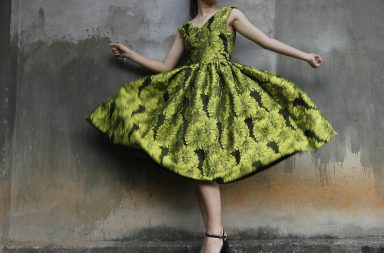There’s something timeless about beer gardens. Maybe it’s the long tables, the way sunlight filters through trees, or the fact that people feel more open and relaxed when there’s sky overhead. At their best, beer gardens strip things back to what really matters—good drinks, casual company, and space to be yourself.
Part of their appeal is rooted in how unpretentious they are. You don’t need elaborate decor or a fine dining vibe. You need a place that feels good to sit in for a few hours. That’s why beer gardens still work, and why they’re popping up again in all shapes and sizes.
Weather plays into this too. Today’s beer gardens often feature simple, smart adaptations: shade sails during summer, fire pits for chilly nights, and umbrellas to keep things going when the weather turns. These touches don’t just extend the season—they make the space feel more intentional and cared for.
COVID-19 also rewired how people socialize. Being outside became safer, and many realized they preferred it that way. Beer gardens naturally filled that need and have stayed popular even after indoor spots reopened. People discovered that fresh air, ambient noise, and open layout made for better hangs.
On the business side, beer gardens offer solid returns. With just a few tables and consistent traffic, drinks and light food can generate steady revenue. There’s less overhead than a traditional bar, and because guests often seat themselves, labor costs are lower too. It’s a smart use of space with a big emotional payoff.
DIY Backyard vs. Commercial Venture
Opening a beer garden doesn’t follow just one blueprint. There are two clear paths—turn your backyard into a personal retreat, or launch a commercial venture that serves the public. Each has its own charm, and both can be surprisingly rewarding if you build with purpose.
The Backyard Version
Let’s start small. A DIY backyard beer garden is well within reach for most people, even if you’re on a budget. Begin by defining your space. Gravel is a great low-cost foundation—it drains well and gives that relaxed, European pub feel. Add some reclaimed pallet benches, a few barrels as standing tables, and you’ve got the bones of the setup.
Lighting does a lot of the heavy lifting. String lights hung between poles or trees create instant mood, especially once the sun dips. Consider adding solar-powered lanterns along pathways or tucked into flower beds for extra character.
A folding table can serve as your bar. Fill coolers with ice or build a simple kegerator setup—there are online guides that show how to convert a chest freezer into a multi-tap keezer. Use chalkboard paint on plywood for a rotating drink menu.
Not everything needs to be nailed down. Foldable seating, modular bars, and collapsible canopies give you the ability to rearrange or pack up depending on the event—or the weather.
Check local laws if you're planning to host large gatherings or charge for drinks. Some cities allow limited food and drink sales from home with a special permit. Others are stricter. Either way, it’s worth a quick call to avoid surprises.
The Commercial Venture
If you're ready to go bigger, a public beer garden opens up more opportunity—and complexity. You’ll need to look into licenses: liquor, health, and potentially music if you’re planning events. Food safety permits come into play if you're serving anything beyond pre-packaged snacks.
Think about mobility. A lot of new beer gardens launch as pop-ups using converted shipping containers, retrofitted trailers, or collapsible tents. These allow for a quicker start, and let you test your concept in different locations without major upfront investment.
Foot traffic is everything. Position your garden near office zones, parks, or mixed-use neighborhoods with built-in flow. Partnering with local breweries can help, too. They may supply branded gear, exclusive brews, or even help co-promote your opening night.
The key difference between home and commercial setups isn’t just scale—it’s mindset. When you go public, you’re creating a mini cultural space. Keep the beer flowing, but also think about what draws people in beyond the drinks: music, lighting, seating, and the little details that make it memorable.
Design Concepts: Layout, Seating, Vibe
Designing a beer garden is more than just putting out a few tables. Every decision affects how people move, where they gather, and how long they stay. A great layout quietly supports comfort, efficiency, and atmosphere—without feeling forced.
Think in Zones
Start by mapping your space. Divide it into key areas: bar zone, seating zone, activity zone, and chill-out nooks. The bar should be clearly visible and easy to reach from anywhere. Avoid bottlenecks. You want lines to flow smoothly and not block walkways.
Long communal tables are classic for a reason. They bring strangers together and encourage conversation. If your space allows, add smaller tables or high-tops around the edges for couples and introverts who prefer their own corner.
Keep lawn games to one section so they don’t interfere with the flow of servers or seated guests. Use planters, shrubs, or fencing to subtly separate zones without boxing people in.
Lighting Builds the Mood
Don’t underestimate lighting. When done well, it adds warmth, makes people feel safe, and creates that “just one more drink” vibe. Use LED string lights overhead, ideally in warm white tones. Solar or plug-in lanterns work well on tables or lining walkways.
Go for indirect lighting where possible—under-bench LEDs, uplighting behind plants, or glow poles at corners. It’s not about visibility—it’s about tone.
Seating Should Match the Vibe
Furniture choices affect not just look, but behavior. Reclaimed wood benches look great and feel grounded, especially paired with steel-framed stools that won’t tip easily. Waterproof cushions can add comfort and color without looking out of place.
Mix up your seating types. A few lounge-style spots with low tables invite people to linger. Bar-height tables near the counter make quick stops more comfortable. And when the space allows, outdoor restaurant furniture with weather resistance is a smart long-term investment—especially for high-turnover areas.
Colors and textures should reflect the mood you’re after. Wood, steel, and soft textiles in earthy tones create a relaxed, casual vibe. Bright plastics and neon lighting say something entirely different.
A good design invites movement, encourages return visits, and holds up to weather, crowds, and beer spills. That’s the magic mix.
Beer, Menu, and the Social Element
Beer is central, but it’s only part of the equation. The menu, the atmosphere, and the energy of the space all feed into how people experience your garden. You’re not just pouring drinks—you’re shaping how people spend their free time.
Keep Beer Local and Rotating
Start small: four to six taps is plenty. Curate the selection with a mix of crowd-pleasers (lager, wheat, IPA) and one or two surprises (a sour, a saison, or a local seasonal). Partner with microbreweries—they often offer better pricing, unique kegs, and co-promotion opportunities.
Rotating taps give regulars a reason to come back. Just make sure your staff knows how to describe each beer. A well-trained server who can talk hops, body, and finish adds credibility and charm.
A chalkboard menu works best—easy to update, visible from afar. Keep descriptions short but flavorful. For bonus points, add food pairings next to each tap.
Food Should Complement, Not Complicate
You don’t need a full kitchen to serve satisfying bites. Think salty, shareable, and snackable. German-style pretzels, charcuterie boards, veggie skewers, or even house-pickled snacks work wonders with beer.
Food trucks are a great solution too. Rotate vendors weekly to keep things fresh and build community partnerships.
Include at least a few vegetarian and gluten-free options. You want groups to feel welcome as a whole, not splintered by dietary needs.
Social Touches that Make It Memorable
Yard games are easy wins. Cornhole, ring toss, and oversized Connect Four bring smiles without needing staff. Set up a game corner and let guests help themselves.
Evenings come alive with live music, DJ sets, or open mic nights. Just keep the volume moderate—this isn’t a nightclub. People should be able to hear each other without shouting.
Music production doesn’t need to be studio-grade. A curated playlist and a mid-range sound system can do the job. Just make sure the mix fits your vibe.
Great beer keeps them coming. But games, food, and fun turn casual visitors into regulars.
Costs and Budget-Friendly Hacks
You don’t need deep pockets to get your beer garden off the ground. You just need to spend smart, reuse where possible, and know where to cut without hurting the guest experience.
Repurpose Materials
Pallets are a go-to material for DIYers. You can build tables, benches, and bar counters with little more than a saw, some screws, and a weekend. Seal them properly, and they’ll last through many seasons.
Cable spools make great standing tables. Old doors with added legs can become picnic tables. Paint, stain, and weatherproofing go a long way in making reused items feel intentional.
Smart Gear Choices
Instead of buying a brand-new kegerator, convert a chest freezer into a keezer. These DIY systems cost far less and can store multiple kegs with independent taps. Guides and videos are easy to find online.
For cooling, a secondhand commercial fridge or even a large cooler on wheels can suffice, especially at first. Don’t overspend until your audience and needs grow.
Buy umbrellas and heaters during off-season clearance sales. Check restaurant closures for fire-sale gear. You’d be surprised how often quality items pop up at a third of the price.
Infrastructure Shortcuts
Skip permanent plumbing if you're just starting. Use a foot-pump sink or bring in a portable washing station. Compostable cups and a large trash and recycling system will keep cleanup manageable.
Gravel is your best friend for surfacing. It’s cheap, drains well, and fits the casual aesthetic. Avoid pouring concrete unless you're locked into a location long-term.
Plan your spending around what makes guests stay longer: seating, ambiance, and the beer itself. The rest can evolve over time.
Marketing & Community Buzz
A beer garden isn’t just a business—it’s a story waiting to be told. Marketing starts before your first pour and continues with every event, photo, and interaction. Done right, it builds momentum organically.
Share the Build
People love watching a space come to life. Start posting progress photos, sketches, or time-lapse videos of your DIY builds. Share behind-the-scenes moments, from painting signs to testing the first keg.
Let your future customers feel like part of the journey. They’ll be more likely to support a space they watched grow.
Build Brand and Visual Identity
You don’t need an expensive designer. Use free tools like Canva to make a clean logo and color palette. Stick with consistent fonts and themes on social media. Even a homemade wooden sign with your logo adds charm.
Offer branded pint glasses, stickers, or even simple T-shirts. These small items act as both keepsakes and marketing tools.
Involve the Community
Host a volunteer day. Offer free beer or snacks to anyone helping set up tables, plant flowers, or hang lights. Events like these build loyalty and lower labor costs.
Create themed nights—local DJ Fridays, game night Wednesdays, trivia Sundays. Encourage guest participation and celebrate local talent.
Register your spot on Google Maps, Apple Maps, and review sites. Join beer-focused platforms like Untappd, and engage with local beer bloggers or micro-influencers.
Good vibes spread fast. Focus on authenticity and consistency, and your audience will do half the marketing for you.
The Magic of Beer, Outdoors, and Simple Furniture
A great beer garden doesn’t need perfection. It needs presence. People remember the way the lights swayed over their table, the taste of that one pilsner on a warm night, the conversation that ran past closing time.
What makes it work isn’t the budget or the branding. It’s the way everything clicks into place—the benches that creak just right, the music that floats without interrupting, the shade that covers the table when it’s needed most.
Even humble materials—gravel, pallets, a few lanterns—can create real magic when used with care. Add good beer and people who feel welcome, and you’ve got something that’s worth revisiting again and again.


